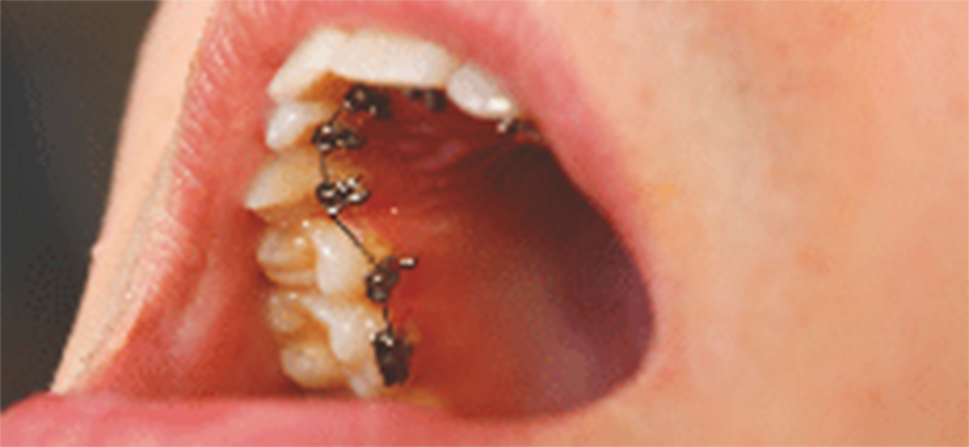We love
YOUR SMILE
ORTHODONTIC DEPARTMENT

Aesthetics and function in harmony
Correct occlusion
Perfect aesthetic smile
Relief from symptoms of dysfunction of the temporomandibular joint
METALLIC BRACKETS
* Non-removable appliance
They are the most widespread, easy and practical to use for the orthodontist. They are
the most classic braces for children. Elastics of different colours can be applied around the braces, according to the child’s taste.
CLEAR BRACKETS
* Non-removable appliance
They are made of Sapphire, are very aesthetic and have rounded edges, making them more tolerable by the patient. For further improvement of aesthetics, transparent braces can be accompanied by white wires that have the same colour of the teeth.
* Ideal for adult treatment
LINGUAL BRACKETS
* Non-removable appliance
They are placed on the inside surfaces of the teeth; this way they are not visible and that is their big advantage. The process of their implementation is more complex, since it is necessary to take impressions of the teeth and send them to special laboratories abroad, in order to be fabricated according the patient’s exact measurements. They have a higher cost.
* Ideal for adult treatment
INVISALIGN
.
The treatment is done with a series of transparent splints that must be worn on both jaws 22 hours a day. They are made of thermoplastic material. This technique is not recommended for complicated cases with functional problems.
* Ideal for adult treatment




The advantages of * non-removable Orthodontic appliances are:
They work 24 hours a day, so they reduce treatment time.
The cooperation that the patient needs is minimal.
They move the teeth in all three dimensions.
They help the Orthodontist achieve high-precision movements of the teeth.
They are easily tolerated by the patient.

Welcome to the Orthodontic Department
When does an Orthodontic treatment start?
How much does it cost?
First visit to the Orthodontist. When and why?
The American and European Academy of Orthodontists suggests that the first visit should be done at the age of 6-7 years.
Orthodontic problems
Orthodontic problems can be divided into three general categories depending on the arrangement of the upper and lower teeth.
Early orthodontics in children with mixed dentition Orthodontics at the young age of 6-10 years
For some Orthodontic problems, early intervention by the Orthodontist is necessary.
Normal Orthodontic Treatment
It should begin when the patient is in permanent dentition, approximately at the age of 10 – 12 years.
Adult Orthodontics
Over the last two decades the number of adults seeking orthodontic treatment has significantly increased and continues to increase.
Orthognathic Orthodontics
If the skeletal problems remain untreated at a young age, their correction, after the growth is completed, it might require a combination of surgical intervention and orthodontic treatment.
SKELETAL DYSHARMONIES ORTHODONTICS WITH MEAW technique (Multiloop Edgewise Arch Wire)
This is a unique technique which is, possibly, the most complete orthodontic technique.